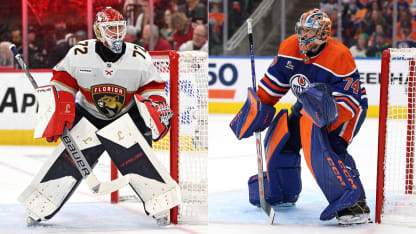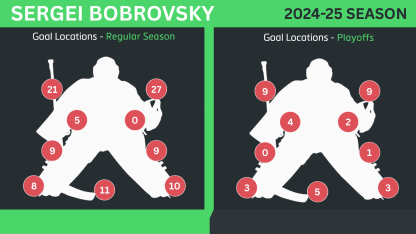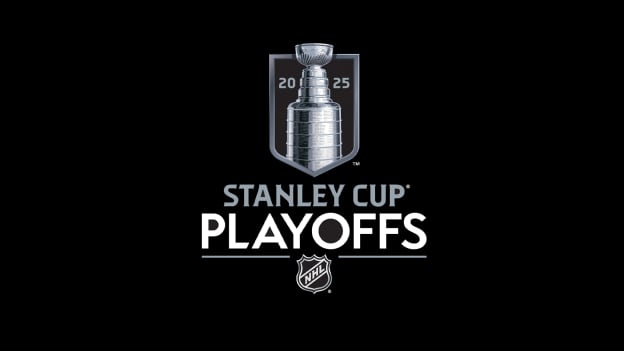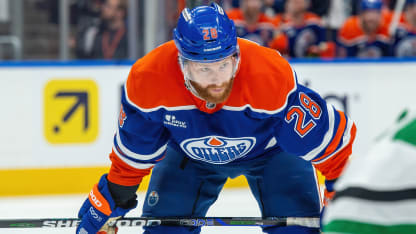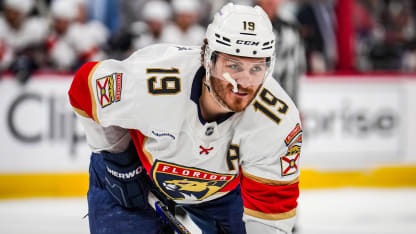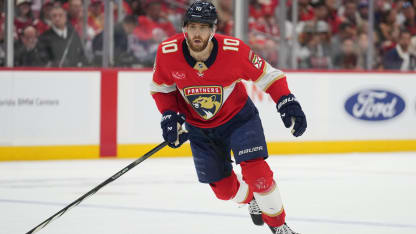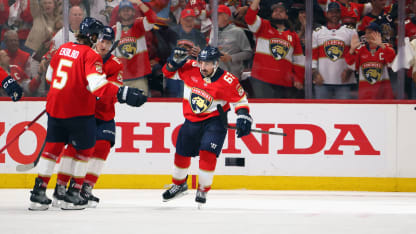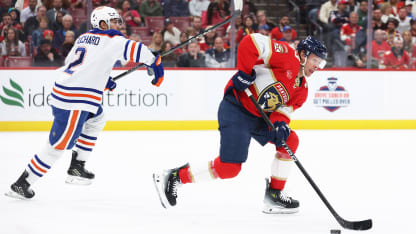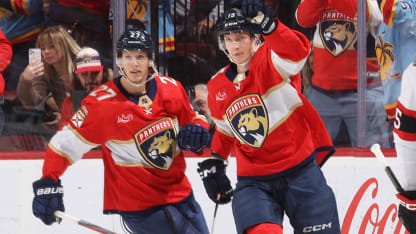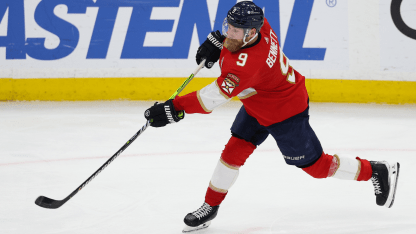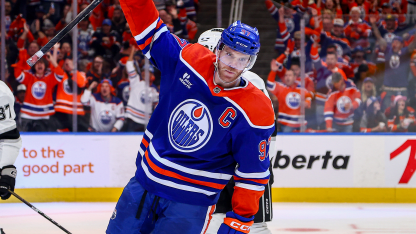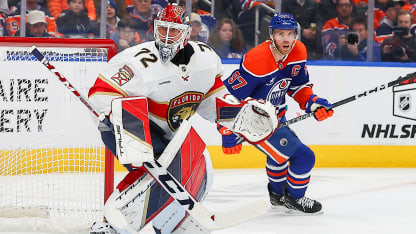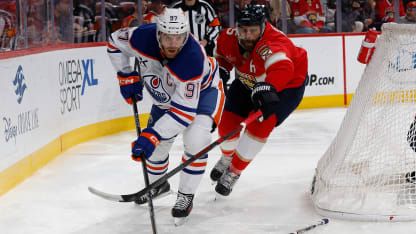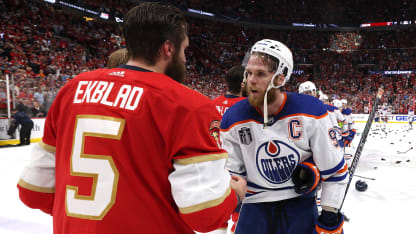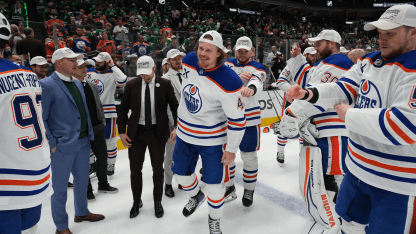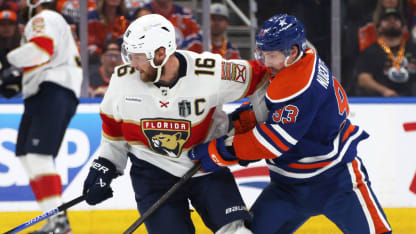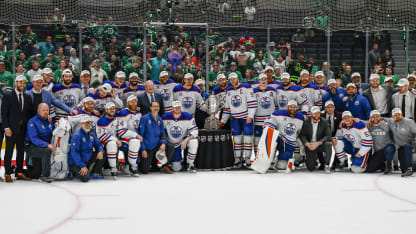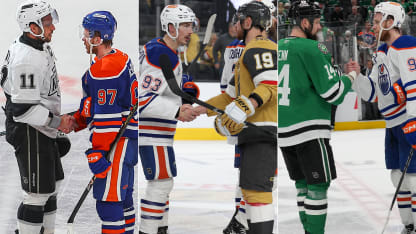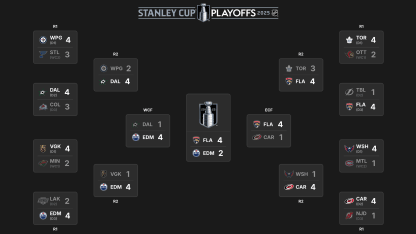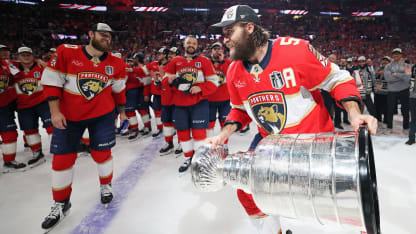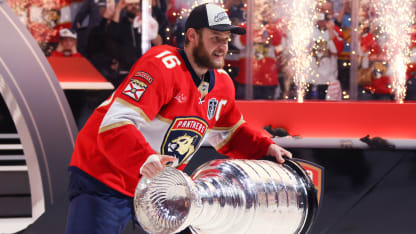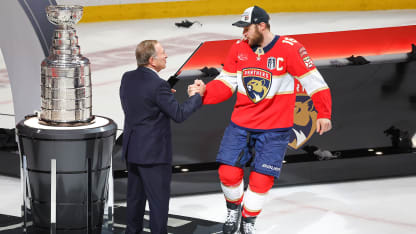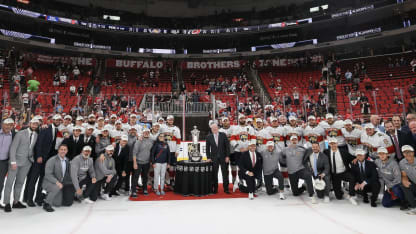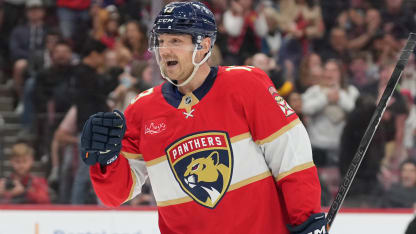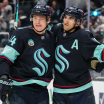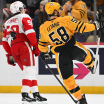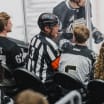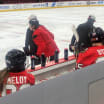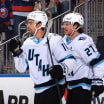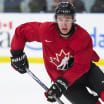Top half of the net off laterals: It's hard to ignore the goal totals above the blocker and arm in the regular season and playoffs, which are all above the averages -- 18.3 percent high blocker and 22.5 percent high glove -- for more than 8,500 goals tracked for this project since 2017. But it's not always as simple as shooting high all the time, and it's as much a credit to how good Bobrovsky is at building vertical coverage over his pads while moving, including a willingness to drop his stick to square up his blocker, as it is as critique. Just ask Carolina Hurricanes forward Logan Stankoven, who did score with a near-perfect clean shot over the blocker off the rush in Game 4 to spark the Hurricanes' only win of the Eastern Conference Final, but was robbed by the outstretched blocker of Bobrovsky when he failed to hit the top half on a backdoor one-timer from below the hash mark. That full-splits save kept Florida ahead 1-0 in Game 3 and is a perfect example of the spectacular momentum-changing moments Bobrovsky is capable of if you give him a chance. So were consecutive saves he made in the second period of Game 5 of the Eastern Conference First Round against the Tampa Bay Lightning, robbing Erik Cernak and Gage Goncalves on side-to-side chances to keep the Panthers ahead 3-2. If you don't get your shot up, you risk a momentum-changing save, evidenced by just one goal over the pads in this entire playoff run so far.
Where you shoot from may matter as much as where you shoot to: There have been clean shots over Bobrovsky's blocker that stood out in the playoffs, including Stankoven's exceptional shot in Game 4 and Toronto Maple Leafs defenseman Morgan Rielly scoring clean over the blocker on a 2-on-1 in Game 1 of the second round. There was also a couple of 5-hole rush shot goals against Toronto, and Sebastian Aho scored under each arm on shots from distance in the conference final, including a screened shot under the blocker and a breakaway shot under the glove. The common denominator was where they shot from, with all coming mid-zone between the top of the face-off circles and longer shots that can sometimes catch Bobrovsky transitioning from a higher stance with his head up and his tracking limited on lower shots.
Create chaos: Getting pucks and bodies to the net is a recipe for success against any elite goalie, but Bobrovsky's goal totals on shots that hit a body or stick were well above the 14 percent tracked average in the tracked regular-season goals (21 percent) and are 33 percent (12 of 36 goals) in the playoffs so far. Add in screens as the primary factor on six playoff goals and it's clear that reducing predictability and sightlines increases the chances of scoring against such an experienced play-reading goalie.
Beware active stick: Getting low passes through can be harder because of Bobrovksy's active stick, so elevating attempts through the crease might get a few more to their intended target. That tendency to reach out with his stick can leave the blocker side exposed, which Seth Jarvis took advantage of twice with high-blocker shots in the conference final, and it can also delay reaction time on the glove side if you catch him reaching out with the blocker to cut off passes from below the goal line on his right side.
Sharper angles to make him move further: Bobrovsky's lateral movement is as good as any, so it's no surprise he's had success on east-west plays. Of the 23 goals he surrendered on plays across the slot line, an imaginary line dividing the offensive zone from the goal line to the top of the face-off circles, 17 were finished by one-timers, emphasizing the importance of not giving him any extra time to get across. As well as Bobrovsky moves, some scenarios can make it harder to cover lateral distances. He squares up rush retreats toward the boards and into an overlap of the post when plays get to bottom of the circle, especially on the blocker side, making it harder to get across on a lateral play from sharper angles, with 13 of 23 slot-line goals below the hash marks in the regular season and four of the seven in the playoffs.
Five-hole: Despite the two rush goals against Toronto, pucks under Bobrovsky's pads come more often in scrambles, when lateral pushes from the butterfly force him to lift his push knee, making quick low shots back into his coverage an option worth trying in traffic and on rebounds.
